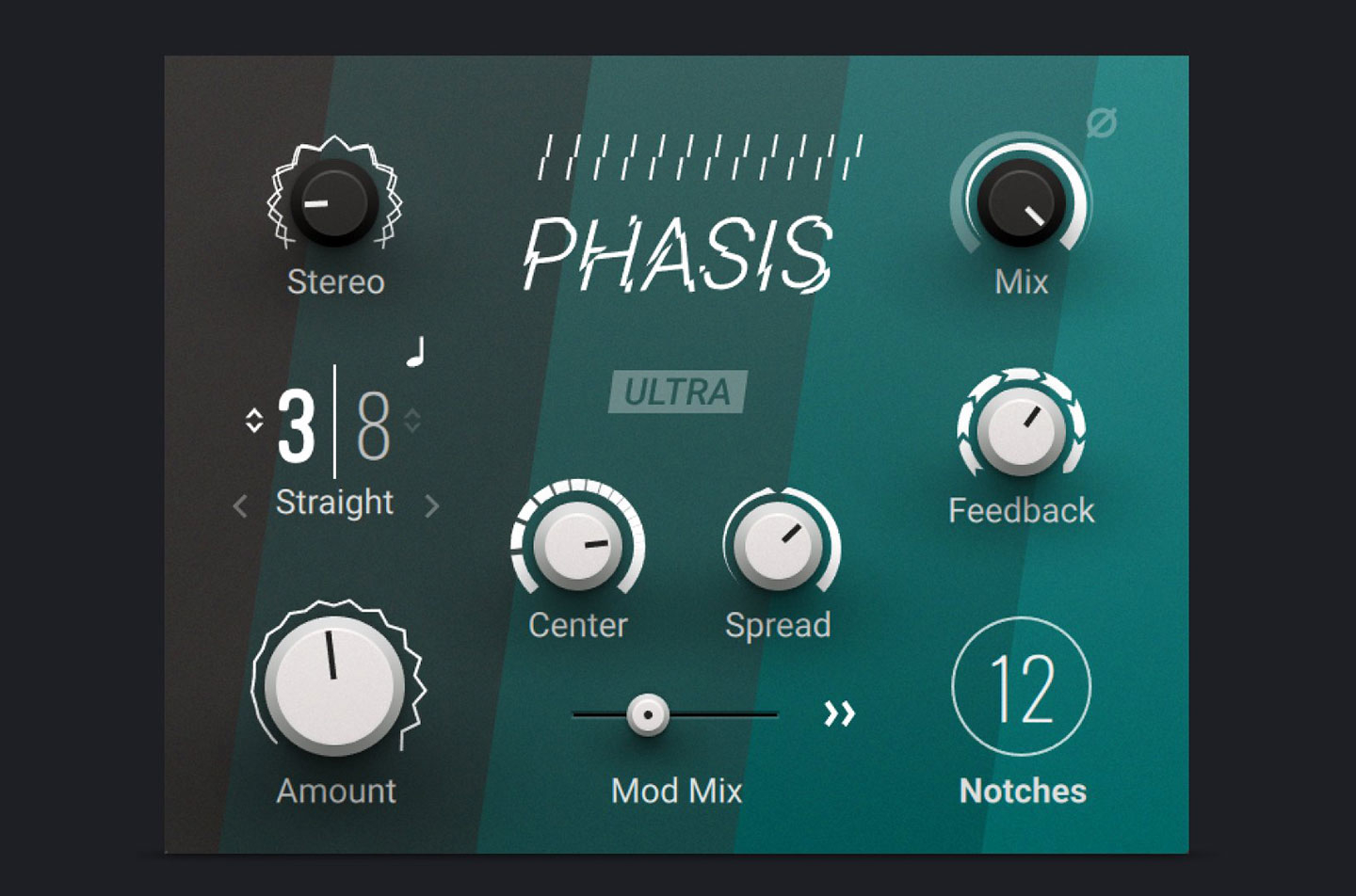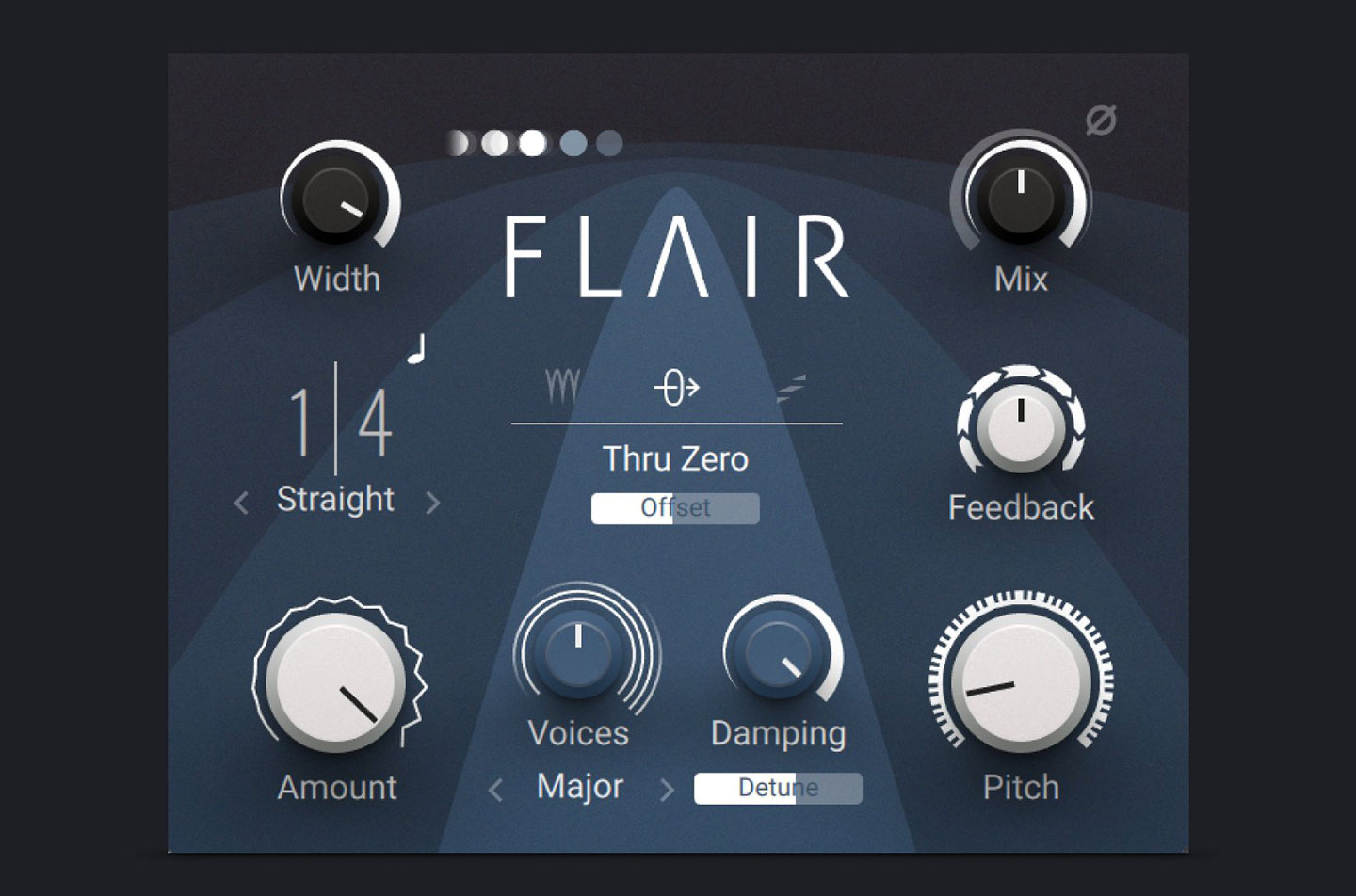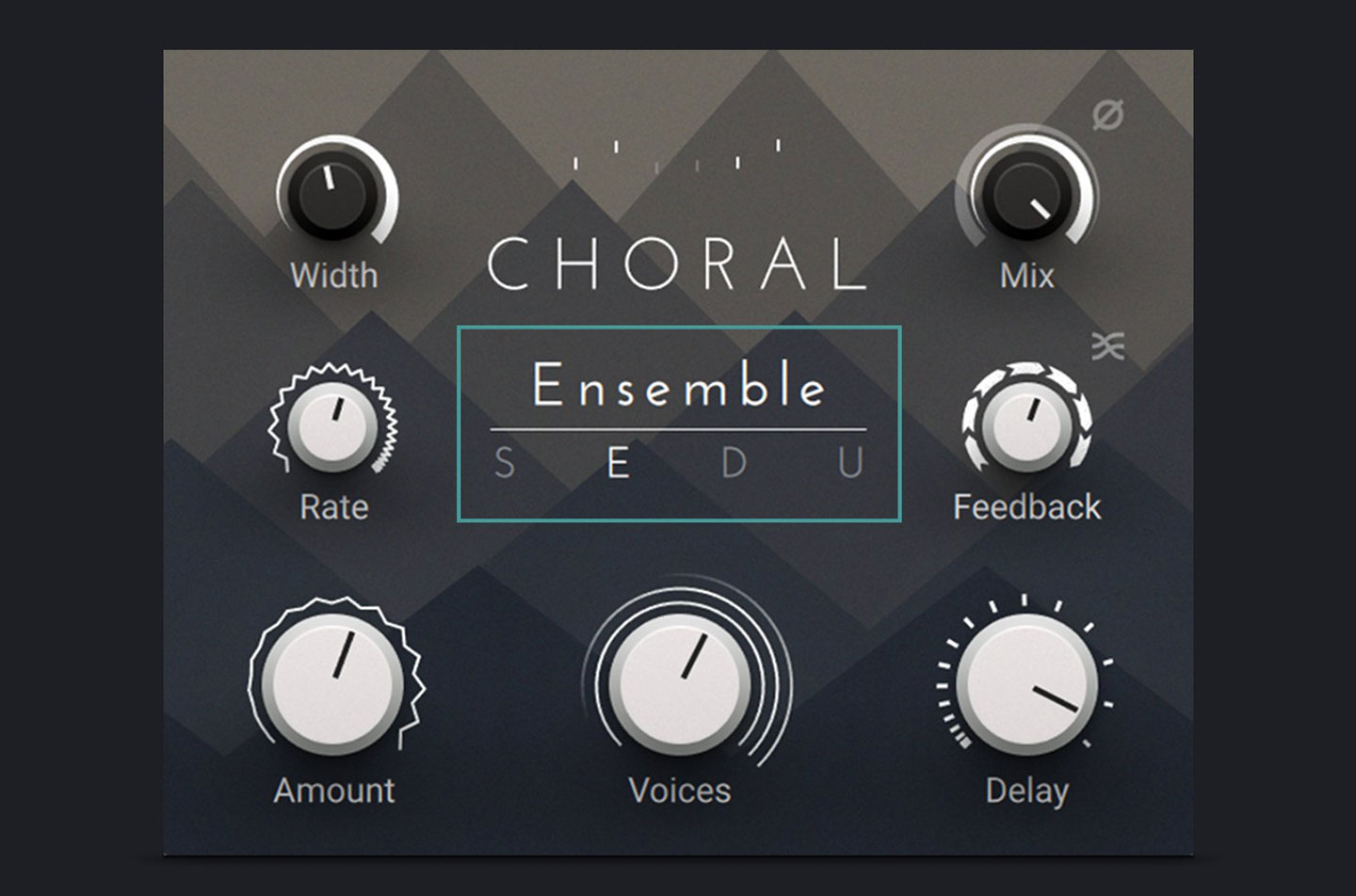- Native Instruments has a tradition of giving during the holiday season, offering free e-vouchers, presets or sample libraries to their user community. Sometimes, however, the gift is more substantial. This was the case in December when NI made Phasis free to download for a limited time. The unassuming plug-in offered more than your average phaser, giving producers a wide range of sound design potential and interesting ways to manipulate the underlying algorithms. Little did we know that Phasis was merely an appetiser before the main course: a three plug-in suite called Mod Pack. Besides Phasis, it includes a pair of new effects called Flair and Choral, which take a similarly innovative approach to flanging and chorus.
Like all phasers, Phasis uses all-pass filters to produce peaks and notches, which are then shifted and altered over time to produce the classic wow sound. Phasis gives you up to 12 pairs of peaks and notches to work with. You control their placement by determining the centre frequency and then an amount of spread, which distributes them evenly across the spectrum. One of Phasis' interesting twists is that, in addition to being able to modulate that centre frequency of the peaks and notches (which all phasers do), there's also a crossfader for modulating the spread amount. You can take things even further by giving each notch its own independent movement in the left and right stereo channels. This may seem daunting, but there is an animated display that provides visual feedback to help you keep track of what's going on under the covers.
It's a compact-looking plug-in but it packs in other advanced functions. There's LFO sync with an easy to use musical notation control, and you can also invert the notches and peaks. Then there's the Ultra button, which lets you push the modulation rate and centre frequency values into audio range. You can tell that NI's UI/UX team had a challenge on their hands with this series, but there are other helpful design touches. The graphics around the knobs indicate their function and animate when Ultra mode is enabled, doing their best to communicate the resulting changes to the frequency ranges. All things considered, they did a good job of making a fairly complex effect as intuitive as possible.
The next plug-in in the bundle, Flair, uses up to four comb filters to achieve the classic flanging effect. The unique factor here is that the flanged voices can be harmonically tuned and played back as chords or an arpeggiated melody. Flair's UI is consistent with the rest of the bundle but there are differences in the lower half. Here you'll see a pitch knob that lets you set the base frequency of the first flanger voice, and a chooser that lets you pick from an impressive number of chord types ranging from the usual suspects (major, minor) to more esoteric options. Sitting above these are three mode selectors that govern the behaviour and playback of the flanger voices. In addition to Standard, Thru Zero duplicates voices to create the through-zero flanging technique known from vintage tape machines, and Scan plays the voices as individual notes to achieve the arpeggiated melodies referenced earlier. To me, Flair is the most difficult of the bunch to get your head around. Even after reading the manual, I often found the best results were achieved by experimenting.
Last but certainly not least, Choral provides a unique take on the chorus effect. Like all choruses, it creates copies of the original sound that vary in timing and pitch, making the signal seem wider and larger. Native Instruments gives you four different modes to work with here, all of which have their own sonic character. Perhaps the best of these is a Synth mode inspired by vintage polysynths of the past. I took a hint from the preset names "Classic Chorus I" and "Classic Chorus II" and guessed that they had the Roland Juno series in mind when designing this algorithm. The other modes in Choral include Ensemble, which replicates the style of chorus found in string synths, Dimension, which is based on rack processors from the early '80s, and Universal, which is a modern design for clean tones. Choral's main twist is the Scatter button, an icon sitting next to the feedback knob that's small enough to be missed unless you know what you're looking for. When enabled, the feedback routing for the chorus voices is altered in a way that gives a reverb-like tail to your sounds.
For the money, there's little in the way of competition for Mod Pack out there. Perhaps the best comparison could be the excellent QuatroMod from Audio Damage. But for depth of sound design potential Mod Pack has the edge. If you're a Maschine or Komplete Kontrol user, you'll want Mod Pack as well as it ships with support for the NKS standard, giving you hands-on control and browser integration. A thorough read of the manual as well as some experimental learning is required to get the most out of these plug-ins, but what you can do with them makes it worth the investment.
Ratings:
Cost: 4.8
Versatility: 4.1
Ease of use: 4.1
Sound: 4.3
 The next plug-in in the bundle, Flair, uses up to four comb filters to achieve the classic flanging effect. The unique factor here is that the flanged voices can be harmonically tuned and played back as chords or an arpeggiated melody. Flair's UI is consistent with the rest of the bundle but there are differences in the lower half. Here you'll see a pitch knob that lets you set the base frequency of the first flanger voice, and a chooser that lets you pick from an impressive number of chord types ranging from the usual suspects (major, minor) to more esoteric options. Sitting above these are three mode selectors that govern the behaviour and playback of the flanger voices. In addition to Standard, Thru Zero duplicates voices to create the through-zero flanging technique known from vintage tape machines, and Scan plays the voices as individual notes to achieve the arpeggiated melodies referenced earlier. To me, Flair is the most difficult of the bunch to get your head around. Even after reading the manual, I often found the best results were achieved by experimenting.
The next plug-in in the bundle, Flair, uses up to four comb filters to achieve the classic flanging effect. The unique factor here is that the flanged voices can be harmonically tuned and played back as chords or an arpeggiated melody. Flair's UI is consistent with the rest of the bundle but there are differences in the lower half. Here you'll see a pitch knob that lets you set the base frequency of the first flanger voice, and a chooser that lets you pick from an impressive number of chord types ranging from the usual suspects (major, minor) to more esoteric options. Sitting above these are three mode selectors that govern the behaviour and playback of the flanger voices. In addition to Standard, Thru Zero duplicates voices to create the through-zero flanging technique known from vintage tape machines, and Scan plays the voices as individual notes to achieve the arpeggiated melodies referenced earlier. To me, Flair is the most difficult of the bunch to get your head around. Even after reading the manual, I often found the best results were achieved by experimenting. Last but certainly not least, Choral provides a unique take on the chorus effect. Like all choruses, it creates copies of the original sound that vary in timing and pitch, making the signal seem wider and larger. Native Instruments gives you four different modes to work with here, all of which have their own sonic character. Perhaps the best of these is a Synth mode inspired by vintage polysynths of the past. I took a hint from the preset names "Classic Chorus I" and "Classic Chorus II" and guessed that they had the Roland Juno series in mind when designing this algorithm. The other modes in Choral include Ensemble, which replicates the style of chorus found in string synths, Dimension, which is based on rack processors from the early '80s, and Universal, which is a modern design for clean tones. Choral's main twist is the Scatter button, an icon sitting next to the feedback knob that's small enough to be missed unless you know what you're looking for. When enabled, the feedback routing for the chorus voices is altered in a way that gives a reverb-like tail to your sounds. For the money, there's little in the way of competition for Mod Pack out there. Perhaps the best comparison could be the excellent QuatroMod from Audio Damage. But for depth of sound design potential Mod Pack has the edge. If you're a Maschine or Komplete Kontrol user, you'll want Mod Pack as well as it ships with support for the NKS standard, giving you hands-on control and browser integration. A thorough read of the manual as well as some experimental learning is required to get the most out of these plug-ins, but what you can do with them makes it worth the investment. Ratings: Cost: 4.8 Versatility: 4.1 Ease of use: 4.1 Sound: 4.3
Last but certainly not least, Choral provides a unique take on the chorus effect. Like all choruses, it creates copies of the original sound that vary in timing and pitch, making the signal seem wider and larger. Native Instruments gives you four different modes to work with here, all of which have their own sonic character. Perhaps the best of these is a Synth mode inspired by vintage polysynths of the past. I took a hint from the preset names "Classic Chorus I" and "Classic Chorus II" and guessed that they had the Roland Juno series in mind when designing this algorithm. The other modes in Choral include Ensemble, which replicates the style of chorus found in string synths, Dimension, which is based on rack processors from the early '80s, and Universal, which is a modern design for clean tones. Choral's main twist is the Scatter button, an icon sitting next to the feedback knob that's small enough to be missed unless you know what you're looking for. When enabled, the feedback routing for the chorus voices is altered in a way that gives a reverb-like tail to your sounds. For the money, there's little in the way of competition for Mod Pack out there. Perhaps the best comparison could be the excellent QuatroMod from Audio Damage. But for depth of sound design potential Mod Pack has the edge. If you're a Maschine or Komplete Kontrol user, you'll want Mod Pack as well as it ships with support for the NKS standard, giving you hands-on control and browser integration. A thorough read of the manual as well as some experimental learning is required to get the most out of these plug-ins, but what you can do with them makes it worth the investment. Ratings: Cost: 4.8 Versatility: 4.1 Ease of use: 4.1 Sound: 4.3